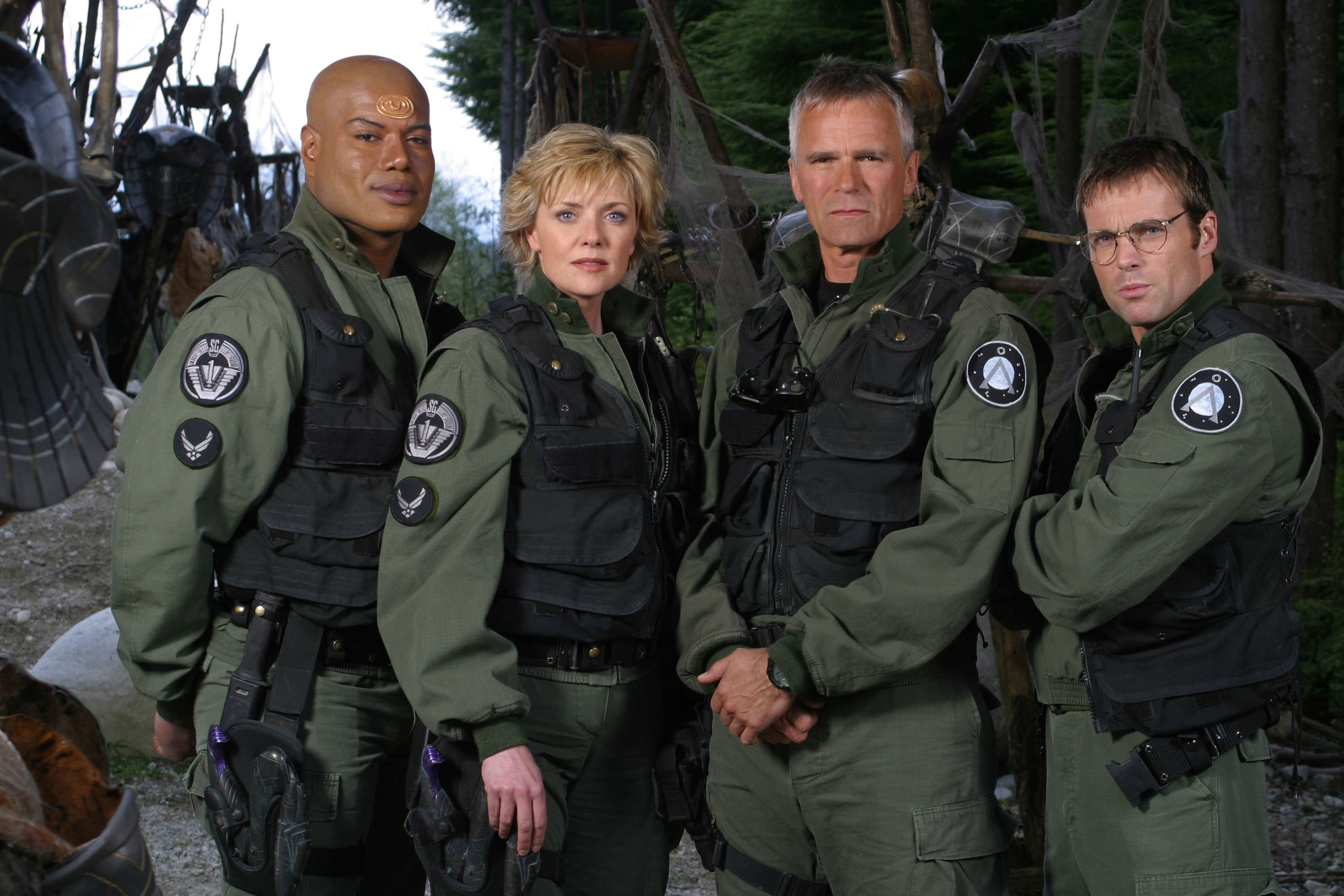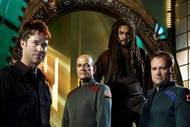Create a free profile to get unlimited access to exclusive videos, sweepstakes, and more!
What made 'Stargate SG-1' great? Taking cues from NASA’s real-life space race sure helped
“We are people from the here and now, warts and all,” reflects series co-creator Brad Wright.

It’s been 25 years since Stargate SG-1 arrived to expand for television the ambitious world of deep space exploration first laid out in Roland Emmerich’s landmark 1994 feature film Stargate. The beloved spinoff series was all about mixing the futuristic with the mythic secrets of humanity’s past — a blending of old-and-new tropes that never felt anything but cutting edge over the course of the show's 10-year run.
Despite being at the bleeding edge of wormholes, distant galaxies, and strange alien civilizations that challenged humanity’s concept of people’s place in the universe, SG-1 took much of its storytelling power from a simple idea: That there’s no time like the present to start searching for what’s out there.
That’s one of the new insights shared by co-creator and Stargate SG-1 writer Brad Wright, who along with other series veterans spoke with Gizmodo recently for a far-ranging chat to commemorate the series' 25th anniversary. Don’t let all the wormholes and spaceships fool you, Wright suggested; the show’s real power came from portraying, in science fiction, the here-and-now ethos of exploration that its creators admired by witnessing NASA tackle the early exploits of the fledgling U.S. space program.
“It was rooting it in the here and now that made us unique,” Wright explained, likening the show’s Air Force special ops team to the space program’s real-life band of risk-taking astronauts. “…We are people from the here and now, warts and all. Way over our heads, not ready for this, and succeeding anyway.”
“At the concept stage we wanted them to be a team we rooted for,” Wright added, noting the tight-knit nature of the SG-1 crew was directly inspired by NASA’s “leave no man behind” early mission statement. “We genuinely adored each other and looked out for each other,” added Amanda Tapping, who as Samantha “Sam” Carter appeared in all three Stargate TV spinoffs including SG-1, Stargate Atlantis, and Stargate Universe. “And I think that connection translated to the screen.”
Richard Dean Anderson, the MacGyver acting icon who inherited the small screen mantle of Stargate’s Jack O’Neill from the original film’s Kurt Russell, shared a similar sentiment earlier this year when he appeared on Wright’s Conversations in Sci-fi podcast. “The only demand I made on set was that everybody have a good time,” he said. “…Everybody was very bright and brought their own personalities to their characters and we all got along. There was a lighter environment in which to work and again, it went back to the only demand I had, [which] was: ‘Let's not make this brain surgery.’ Or, ‘Let's make this a happy brain surgery.’”
It might take a brain surgeon to predict where the Stargate name might next show up, now that Amazon owns the MGM library that enshrines the heavily-treasured franchise. Wright has said that he’s hopeful Amazon might bite on a series pilot he’s written that, much to fans’ delight, would bring back Sam Carter (with a promotion to General, no less), alongside SG-1 resident brainiac Daniel Jackson (Michael Shanks). In the meantime, you can catch the original Stargate SG-1 — while keeping an eye out for signs of the real-world space camaraderie that inspired it, of course — at Netflix.
Looking for some more sci-fi adventure? Check out Battlestar Galactica streaming now on Peacock.


























